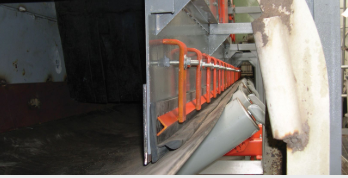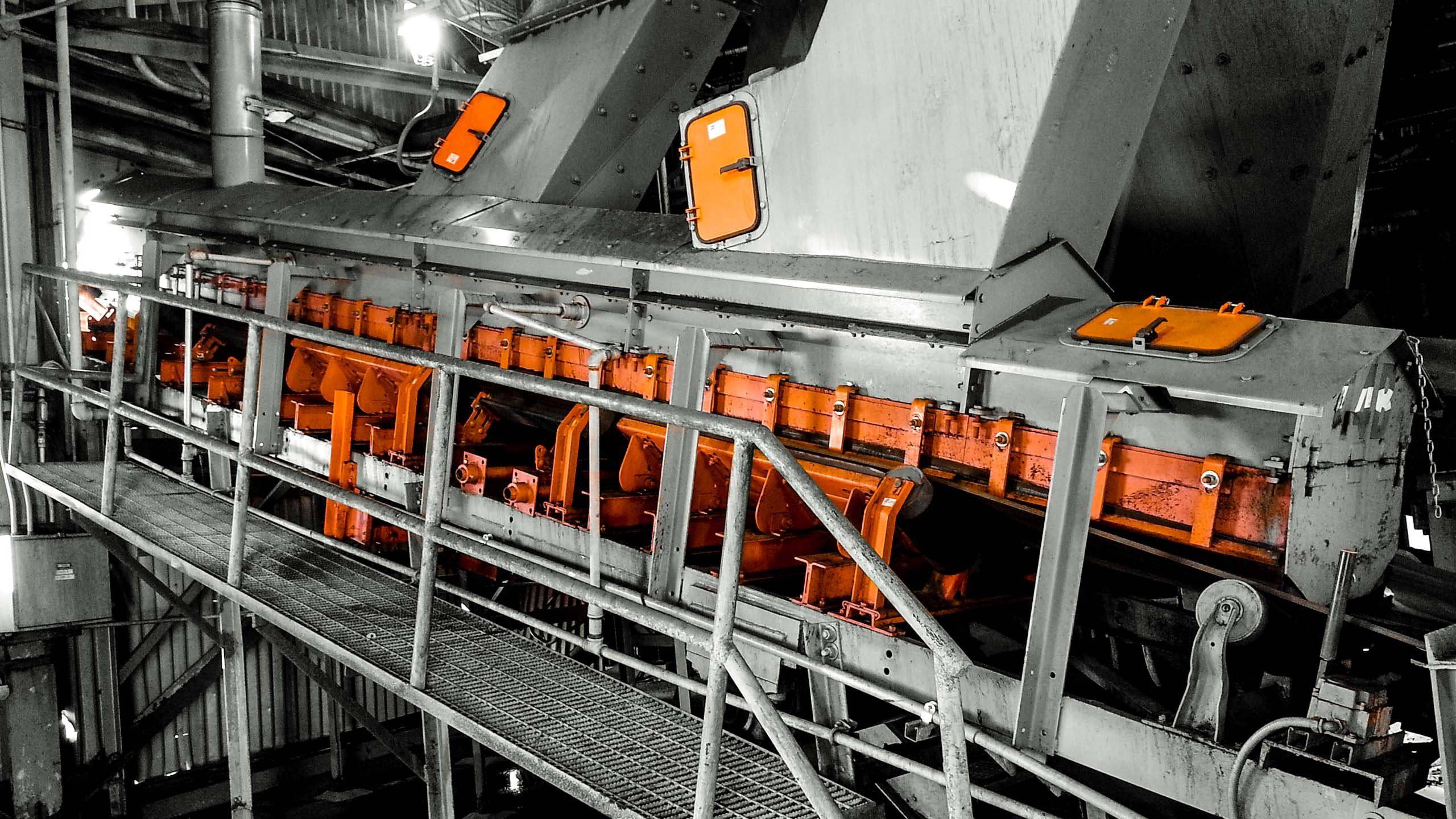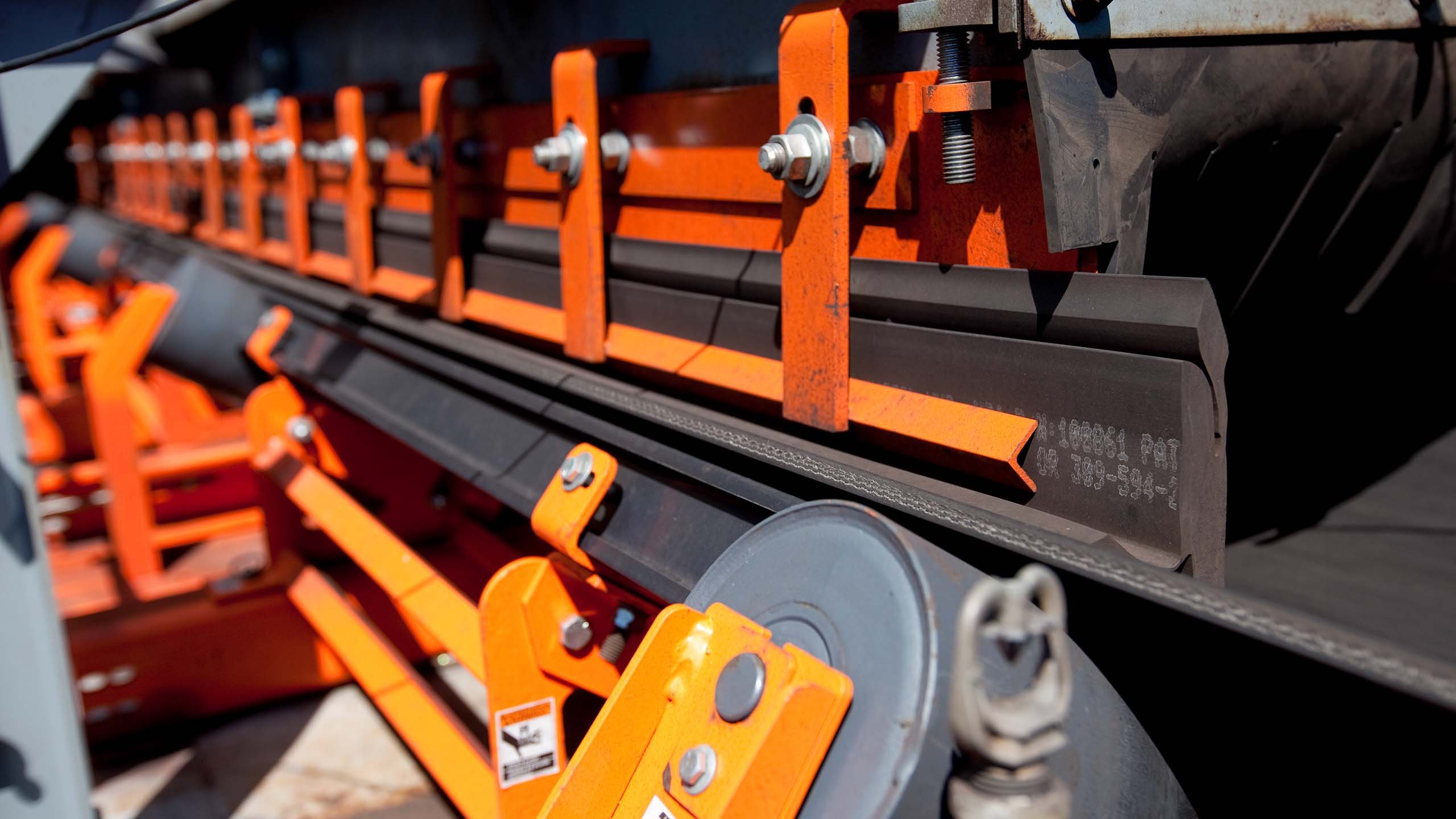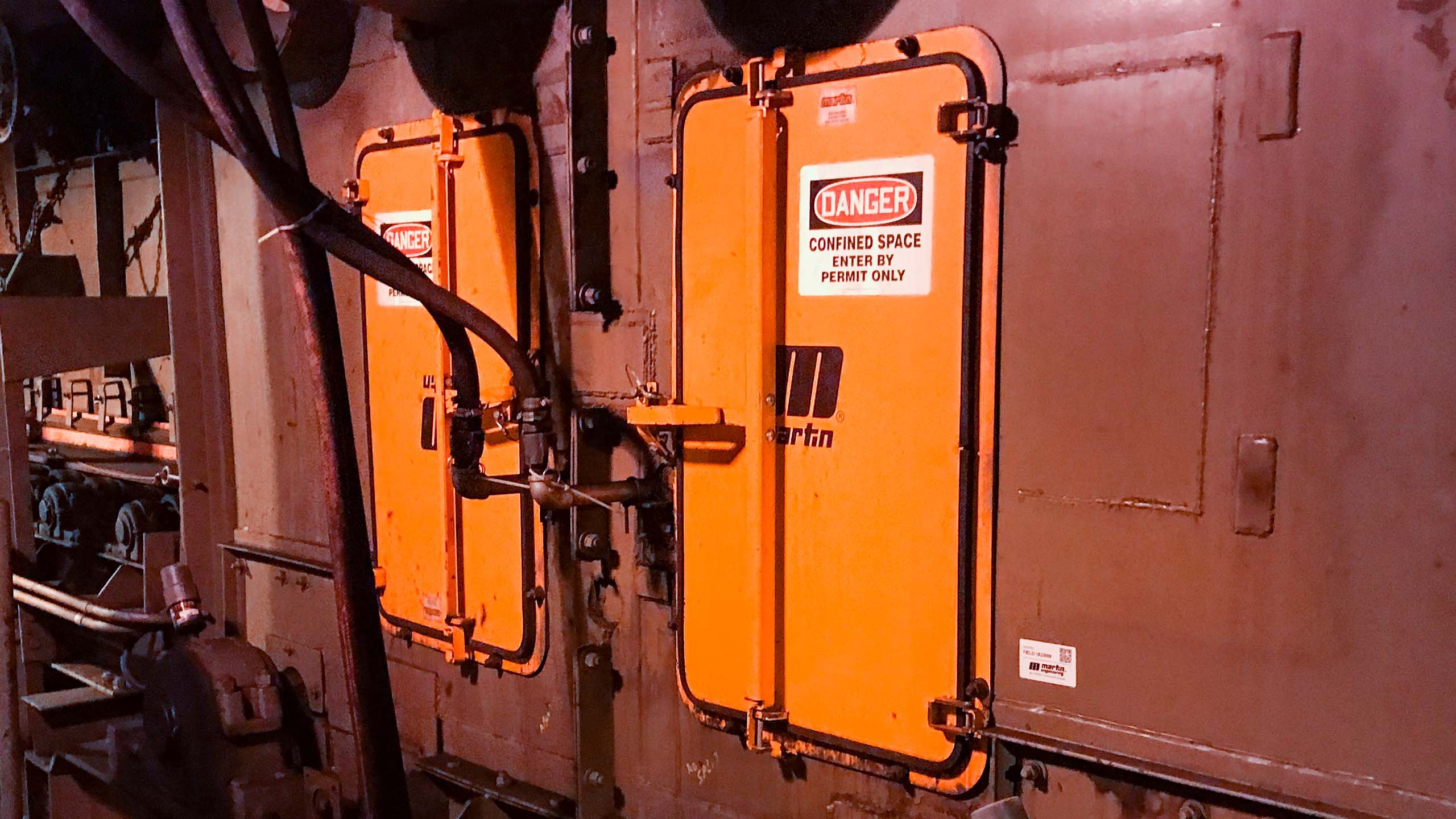The transfer chute is usually designed for full flow and a consistent material path. However, the flow of a bulk material through the chute will change as the material changes properties, the tonnage changes, the chute wears, or the bulk material builds up the chutewall.
Deflectors
Deflectors may be used inside a transfer chute to absorb impact and minimize wear, starting at the point where the material trajectory first meets the head chute. It is important to provide enough clearance between a deflector and the head pulley of the discharging conveyor to prevent large lumps from blocking the passage or cohesive material from adhering to the plate, which could cause the transfer chute to plug.
Once the material flow leaves the first point of contact with the chute, it may be necessary to fine-tune the flow of the material on start-up of the system. Deflectors, or “kicker plates,” are often included in the original plan or installed at start up to steer the material flow.
During the start-up of a new conveyor system, it is common practice to install deflectors within the loading chute to help center the load. The process of getting a desired flow path through the chute is often one of trial and error. These deflector plates should be field-adjustable so they can be repositioned to achieve the desired effect. They should be accessible to allow efficient replacement. Inspection and access points are critical to observing and maintaining the proper direction for deflected materials.
Load placement may be enhanced with deflectors installed on the inside surface of the loading chute to direct lumps of material toward the center of the load zone. Center-loaded lumps are less likely to slip off the edges of the belt or damage the skirtboard seals.
Deflector wear liners inside the bottom of the loading chute next to the belt may reduce the problems associated with off center loading. One or more deflectors or impact plates may be necessary to retard the forward momentum of the material, redirect it in the proper direction, and center the load on the receiving belt. These liners feature a bend or angle that turns the material toward the center of the belt and away from the belt edges. Deflector wear liners should be used with care, because they may contribute to other problems, such as material entrapment and transfer chute choking. Popular ways to manage the flow of bulk materials through the transfer chute and minimize impact are installation of scalping bars or the use of rock boxes.
Scalping, or Grizzly, Bars
Scalping bars – also called a grizzly or grizzly bars – within the transfer chute allow the fines to pass through first to form a protective bed on the belt. The lumps, which are unable to pass between the bars, slide down the incline and land on the belt on a cushion formed by the previously deposited fines. Plants use grizzlies like a grate at truck dumps or other installations to keep oversize lumps away from conveyor systems.

Rock Boxes
Rock boxes consist of a ledge inside the drop chute where a pile of the conveyed material accumulates. Subsequent material moving through the chute flows over or deflects off this pocket of captive material. Abrasive force is shifted from the chutework to the accumulated bed of material, and the overall drop height is reduced and impact force dissipated as material bounces off the material on the ledge.
Rock ladders, composed of a series of baffles, or “mini” rock boxes, are used to reduce impact and control material velocity over drops of greater distance. Rock ladder shelves are typically arranged on alternating sides of the chute, so the material never has a free drop of more than 1.5 to 2 meters (5 to 6 ft).
Rock boxes and rock ladders are most appropriate for chutes handling materials such as sand, gravel, or hard rock. The boxes are most successfully used of physical conditions and flow rates do not change over time, because it is important that the flowing material move consistently across the buildup in the rock box. Care must be taken to accurately judge the cohesive characteristics of the material (under wet conditions, for example) in order to avoid accumulations that can choke the chute. Rock boxes should not be used in transfer points handling fragile bulk materials that might suffer degradation or materials with large lumps that can block or choke the flow; nor should they be used if a conveyor will carry more than one material.




















Leave Comment